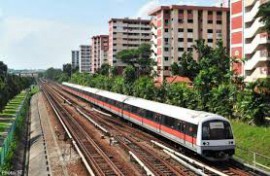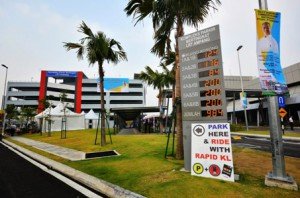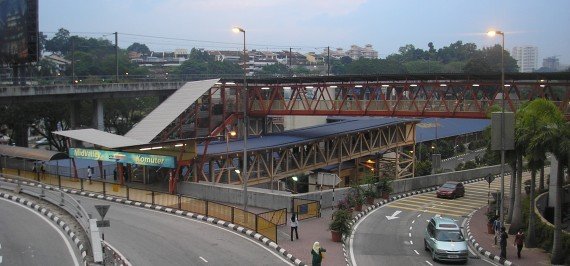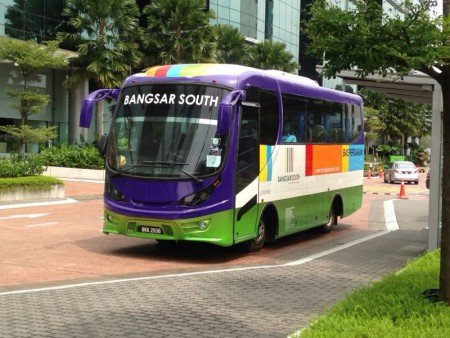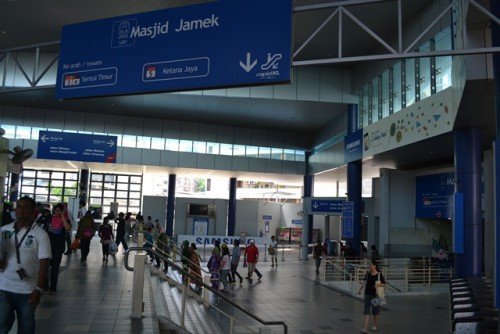Ah, the “MRT Effect”. It refers to the general assumption that properties near to these upcoming stations will mean less commute time, better connectivity, and thus demand will be higher, along with price and rental.
But is it true for all properties near to an MRT line or station? In Part 1, we’ve covered the first three factors contributing to the MRT effect that is growing in Malaysia, specifically the Klang Valley: distance, demographic and behaviour.
Now, let’s continue with the last two factors!
4. Nuisance Factor
Everybody knows that the MRT will be a good addition to the Klang Valley’s transportation framework, but that doesn’t mean it won’t be a real nuisance during the few years (or maybe even decade) of its construction. During this period, properties located close to MRT construction sites will experience a decrease in rental opportunities and price due to low demand caused by traffic congestion and road diversions. Potential buyers or renters will likewise be put off by the constant noise, traffic jams, questionable safety, road blocks, heavy vehicles, dust and dirt from the construction sites. (Not to mention constant fear of something really heavy falling on you or your car.) However, investors who are patient and willing to wait until after the completion of the MRT lines will be rewarded with an increase in property value, capital gains and rental prices for their investments. After all, no pain no gain, right? Seems simple enough.
But wait!
A property that is simply ‘near’ to a station does not guarantee good capital gain or rental yield. MRT stations cannot be standalone structures by themselves. There needs to be adequate parking space, walkways, link bridges, good security, taxi and bus stops in order for commuters to have peace of mind and a good travel experience when using public transport.
Adequate parking
16 out of the 31 upcoming MRT stations will have a ‘Park and Ride’ facility. These will be mainly located at stations with outgoing traffic (places where people drive to park their car and commute to somewhere else), as opposed to stations with incoming pedestrian flow (popular destination stations e.g. central business area, shopping mall, interchange stations, etc). But what if a particular station does not have a ‘Park and Ride’ facility? It will then depend on whether parking is easily found nearby, the cost of alternative parking areas, and how convenient it is to access the station.
Proper link bridges/walkways
Let’s face it: Malaysia is not a pedestrian-friendly place. The weather is hot and humid all year round (and wet when it’s monsoon season), motorists don’t stop for pedestrians even at zebra crossings, motorcyclists use walkways meant for pedestrians, and sometimes there’s no walkway at all. There is a real need for covered, well-lit and well-connected walkways for pedestrians to access the public transportation stations. Realistically, not all stations will have the same treatment, but these aspects are a necessity to restore and maintain user confidence in our public transportation system.
Taxi/bus/shuttle service
Connectivity on foot is not the only vital factor. Other means of transportation are equally, if not more, important for people to get to their final destination. Taxis and busses are essential for people to get to areas further away from a train station. Some enterprising companies, educational institutions, and malls provide free shuttle service to and from major LRT/MRT stations. For example, Panasonic factory, Taylor’s University, Bangsar South, One Utama, Paradigm Mall, etc. Kuala Lumpur also has its free GO KL shuttle bus that stops at major tourist areas and landmarks around the city. This kind of ‘last mile connectivity’ is important to aid users of public transport to arrive at their destination quickly and safely, as well as drive traffic to certain areas of note.
Security
With cases of snatch theft, scams and robberies in the news every day, people need to be able to feel secure when traveling between to and from their homes, be it from school, workplace, eatery, or a simple shopping trip. Nevertheless, although petty crime is prevalent in most neighbourhoods, it is a relief that Malaysia is still relatively free from hardcore crime, even in shady areas of the city. Buyers and investors must be aware of properties in hotspot areas like Wangsa Maju, Setapak and certain parts of Kuala Lumpur which may be affected by its reputation for less stringent security measures and population.
Case in point: The Cabramatta suburb in south-western Sydney, Australia was notorious for being a dangerous and unsavoury area due to high crime, drug dealings, and gangs, but after a clean-up effort over several years by the local government, it was successfully converted into a nice neighbourhood. As a result, social, community and business activities started to flourish again in Cabramatta, and the property prices also saw a significant improvement.
Therefore, one thing to remember is that the public perception of an area is an important contributing factor to the MRT effect.
5. Which Line Matters
There are currently 6 train lines in operation within the Klang Valley: KTM (Rawang-Seremban and Sentul-Port Klang), LRT (Ampang and Kelana Jaya lines), KLIA Express, and Monorail. The LRT lines cater to urban areas in the Klang Valley, while the KTM services suburb and rural areas in the greater Klang Valley area to neighbouring Negeri Sembilan. Choosing a property along the MRT route is no easy task, as line integration is an important factor to consider. Is it near or at an interchange station? Does the line go straight to key areas or is an interchange required? Generally, single-trip lines (no need to change trains) are more desirable and thus have better value than properties that require interchange commutes. Properties along the most convenient train line will experience a stronger MRT effect.
As you can see, merely having a property ‘near’ to an MRT station does not mean its value will significantly increase. Buyers and investors will have to analyse the factors and location of the property before making a decision. The number of developments in key hotspots will definitely increase in the next five years as the MRT lines are progressively completed, especially at potential interchange stations, and may see 15% – 25% growth in prices within a relatively short time period. In fact, it is estimated that residential, industrial and commercial properties will see a 20-30% premium in prices as the MRT project nears completion.
In a nutshell, not all properties and MRT stations are created equal; the increase in price for a property near to an MRT station depends largely on the area and the facilities available.

